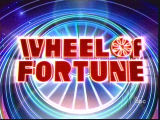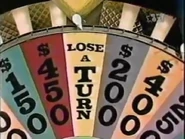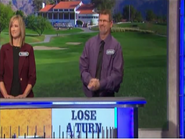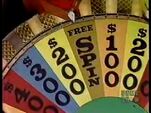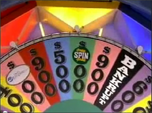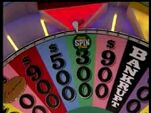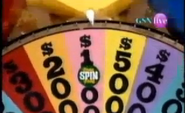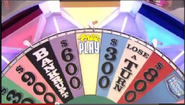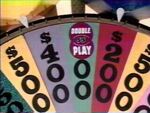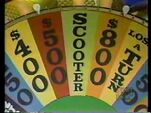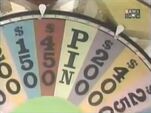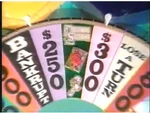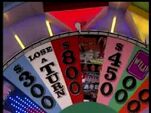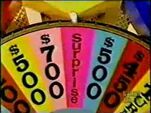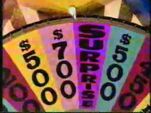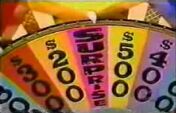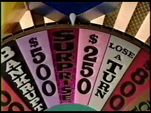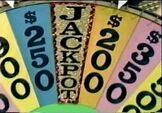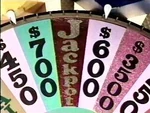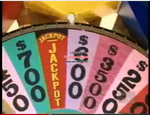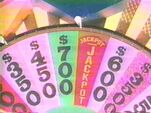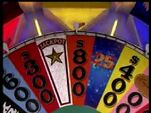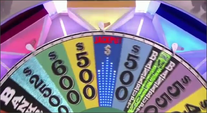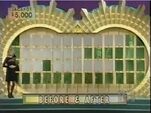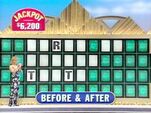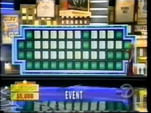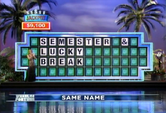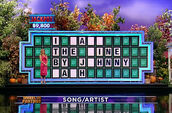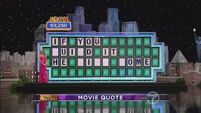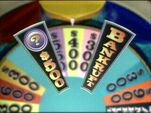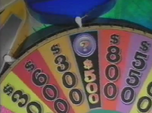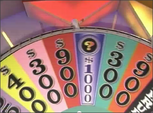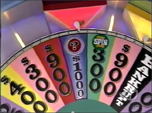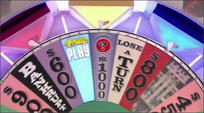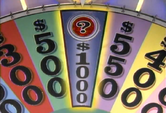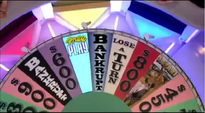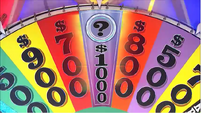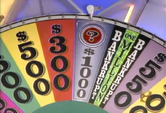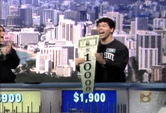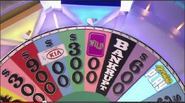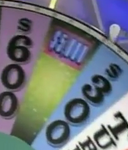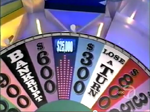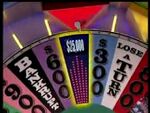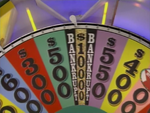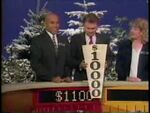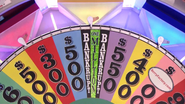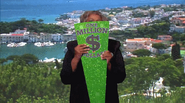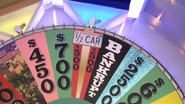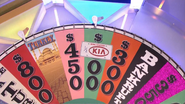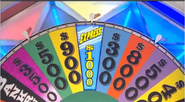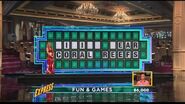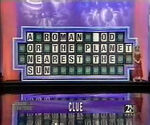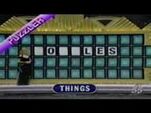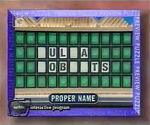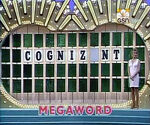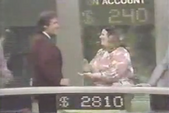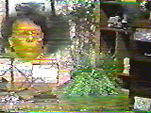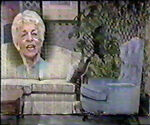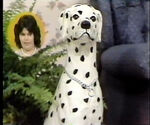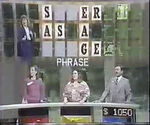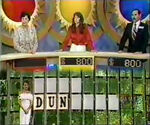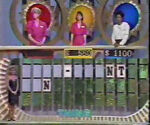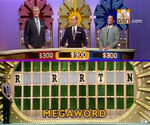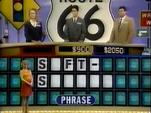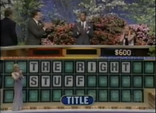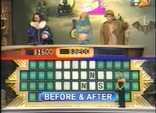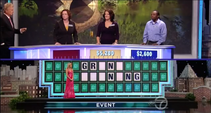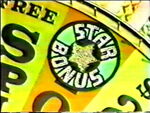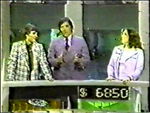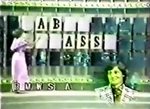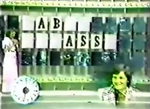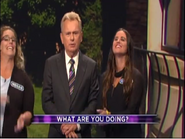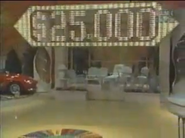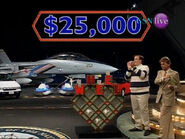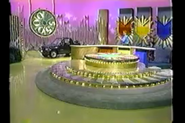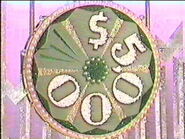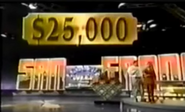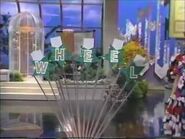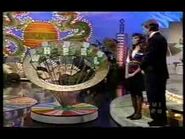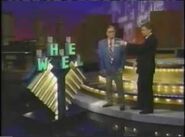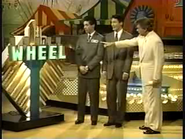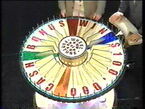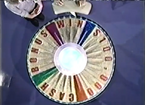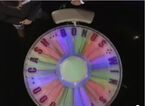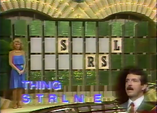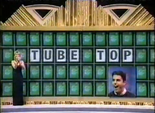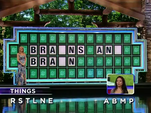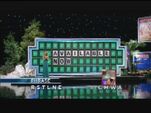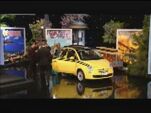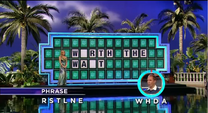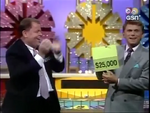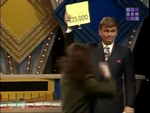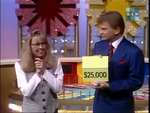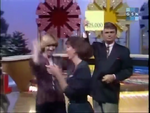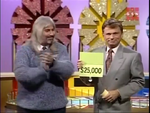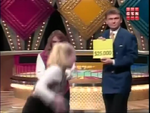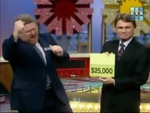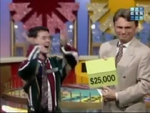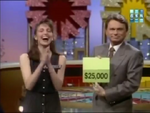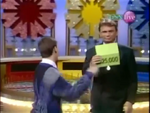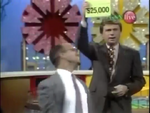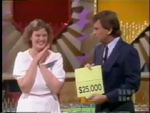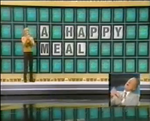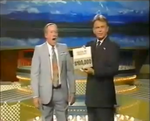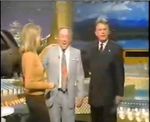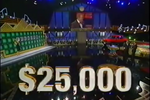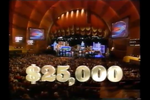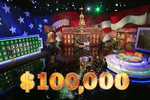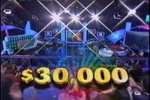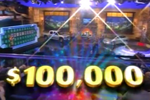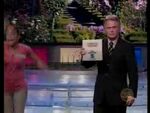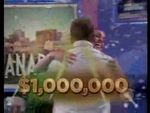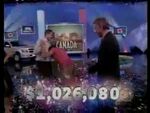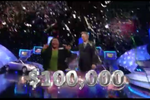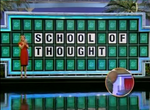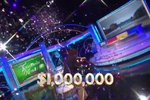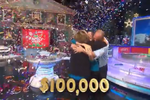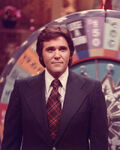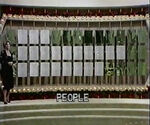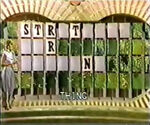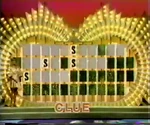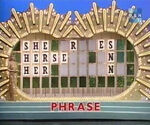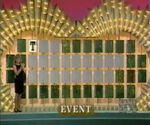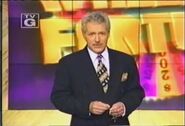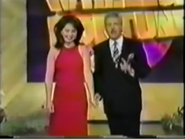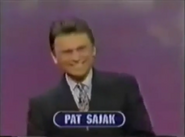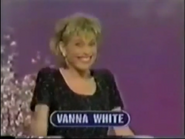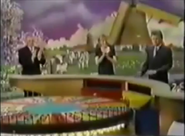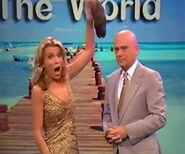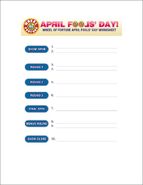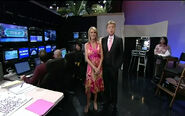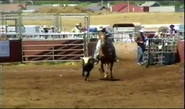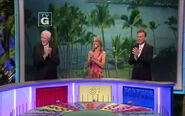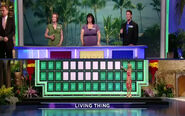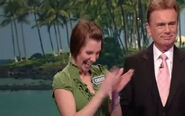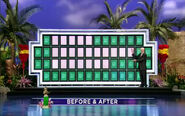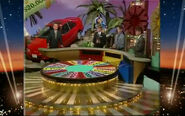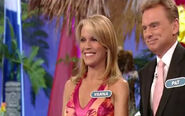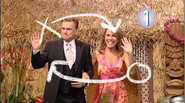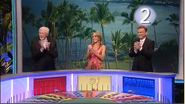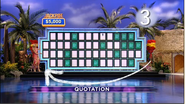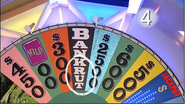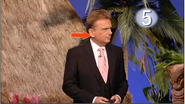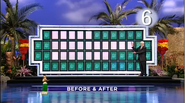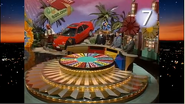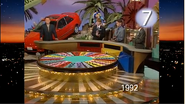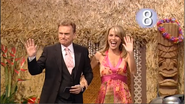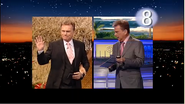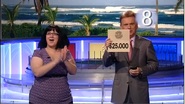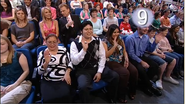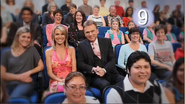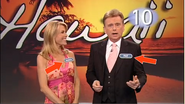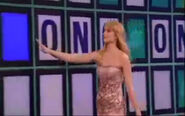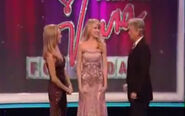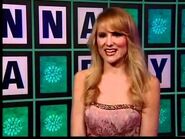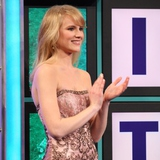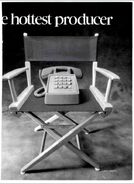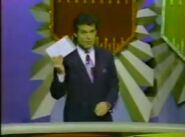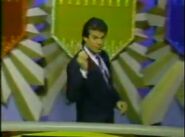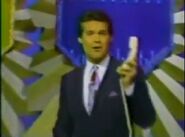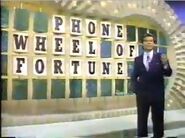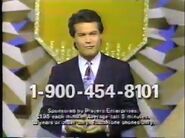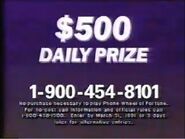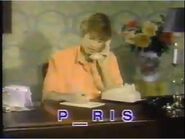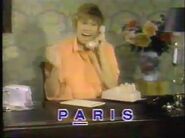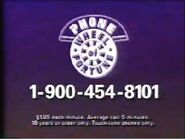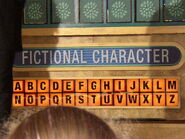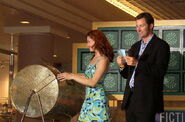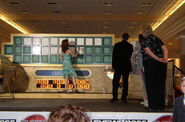| Hosts | |
| Edd "Kookie" Byrnes (Pilot, 1974) Chuck Woolery (Daytime, 1975–1981) Pat Sajak (Daytime, 1981–1989; Nighttime, 1983–Present) Rolf Benirschke (Daytime, 1989) Bob Goen (Daytime, 1989–1991) Alex Trebek (4/1/1997; also subbed for Woolery) | |
| Hostesses | |
| Susan Stafford (1974–1982; Sub: 6/16–20/1986, Daytime) Vanna White (1982–Present) Summer Robin Bartholomew (Sub: 9/1977, 5/1979, 1982) Arte Johnson (1977, Sub) Cynthia Washington (6/1979, Sub) Vicki McCarty-Iovine (1982, Sub) Tricia Gist (1/1991, Nighttime Sub) Lesly Sajak (4/1/1997, Sub) Katie Cantrell (3/24/2011, Sub) | |
| Announcers | |
| Charlie O'Donnell (1974–1980, 1985 {Sub}, 1988–2010) Jack Clark (1980–1988) M.G. Kelly (1988–1989) Don Pardo (New York Shows, 1988) Johnny Gilbert (Sub: 1988, 1995, 4/1/1997) Various Announcers, such as Johnny Gilbert, Rich Fields, Joe Cipriano, John Cramer, and Lora Cain (2010–2011) Jim Thornton (2010–Present) | |
| Broadcast | |
| NBC Pilots: 8/28/1974NBC Daytime: 1/6/1975 – 6/30/1989Syndication (Daily): 9/19/1983 – PresentCBS Daytime: 7/17/1989 – 1/11/1991 NBC Daytime: 1/14/1991 – 9/20/1991 | |
| Packagers | |
| Merv Griffin Productions/Enterprises (1974–1994) Columbia TriStar Television/Sony Pictures Television (2002–Present) | |
| Distributors | |
| King World (1983–2007) CBS Television Distribution (2007–Present) | |
Wheel of Fortune is the long-running daytime network and syndicated game show in which three contestants spin a giant wheel and solve Hangman-type word puzzles to win thousands of dollars in cash & prizes (formerly, just prizes). Currently in syndication, the show is commonly known as "America's Game". Keep in mind that this is completely unrelated to the original short-lived 1952-53 CBS daytime and primetime game show of the same name.
Gameplay
In each round, a puzzle is revealed followed by a category to that puzzle. The player in control spins a large 24-space wheel which is fully calibrated with dollar amounts and penalty spaces (Bankrupt & Lose a Turn). When the wheel lands on a dollar amount, he/she then calls a letter. If the letter is in the puzzle he/she earns the amount times the number of appearances of that letter and continues his/her turn. Along the way he/she can buy a vowel which costs $250 ($200, later $100 on Bob Goen's version) each no matter how many there are or if it appears in the puzzle or not. If at any point the contestant in control picks a letter that is not in the puzzle, picks a letter that is already called, picks a vowel instead of a consonant after spinning, solves the puzzle incorrectly or if he/she hits Lose a Turn, that player loses his/her turn and control goes over the next player in line; if the player hits "Bankrupt", the player in control loses all his/her money and his/her turn and gives up prizes (if any were earned). Previously in the first round there was only one Bankrupt, and there were at least two with each subsequent round. Since Season 27, there has always been at least two Bankrupts throughout the entire game. The first player to solve the puzzle wins the round and keeps all the money earned in that round with a minimum guarantee on each version.
| Years | Single player | Team |
|---|---|---|
| 1983~1995 | $200 | $400 |
| 1995~2005 | $500 | $1,000 |
| 2005~current | $1,000 | $2,000 |
Celebrity Shows
Most celebrity episodes pair a celebrity with a contestant. The contestants play for themselves and keep whatever cash and prizes they earn, while the celebrities play for charity (as they already make money as is) where each team's winnings are matched and donated in cash to a charity or charities of the celebrities' choices, with a minimum guarantee of $10,000. In the early days of celebrity appearances on the show, the celebrities played by themselves.
Special Wheel Spaces
In addition to the money amounts and penalty spots, the wheel also consists of special spaces. Some of them last for just one round.
- Buy A Vowel – In the pilot and early months of the series, one of the spaces, marked "Buy A Vowel", gave the contestant who landed on it a chance to buy a vowel at its usual price of $250 provided he/she had enough money, but if it was landed on with a total less than $250 or if there were no more vowels in the puzzle, it acted as a Lose A Turn space. It was not a successful space, and so it was shelved in favor of the current vowel buying rules which still exist today.
- Free Spin – When a player landed on this space he/she received a Free Spin token. The Free Spin could be used whenever a player was in a position to lose his/her turn. In 1989, the space was removed in favor of a single Free Spin covering the first number of one of the money amounts; when claimed he/she could call a letter for the amount under the Free Spin. Later he/she had to call a correct letter to claim the Free Spin and since the 25th season also received $300 a letter, as the token was covering a $300 space with the "3" revealed rather than concealed (similar to the old rule). The Free Spin token was originally tan with "FREE SPIN" written horizontally across, but by 1989, it would change to green with SPIN in the center and "Free" on the top and bottom in yellow script. The Free Spin was finally retired after Season 26.
In 2017, the Free Spin token returned in an episode titled "B as in Best Friends" for the hit ABC sitcom Fresh Off the Boat where both Honey and Jessica (played by Chelsey Crisp and Constance Wu respectively) appeared in a "Best Friends" week episode of Wheel from 1997.
- Free Play – This is the replacement for the Free Spin which made its debut in Season 27. When landing on this wedge, the contestant in control can call any letter he/she wants or try to solve the puzzle. If the letter called is incorrect or has already been called, there is no penalty for that player and his/her turn continues. When calling a vowel, the player in control does not have to pay anything for it. If the player missolves, he/she again remains in control and can try to solve the puzzle again if he/she likes. Like the Speed-Up Round, vowels are worth nothing, while the consonants are always worth $500, and in the Jackpot Round, added $500 to the jackpot. To this day, this is the only special space to last throughout the entire game.
- Double Play – This was a special token in which the contestant could turn it in before a spin and double the value on that next spin. It also worked on the $10,000 wedge, making it worth $20,000. If the player landed on a prize (including the Surprise) after turning in the Double Play token, the Double Play token was returned to that player. It was only used for Season 13.
- Prize Wedges & Gift Tags – When landed on, the player must call a correct letter to pick up the wedge or tag and place it on his/her triangle under his/her bank. Originally in early years, that player just picked up the wedge immediately and then called a letter for the value under the wedge. To keep the prize, that player must of course solve the puzzle without hitting Bankrupt. The gift tags are valued at $1,000 towards the sponsors of the tags. Starting in Season 30, if the contestant calls a correct consonant, he/she also earns $500 per appearance of each one (similar to the old rule). In the video games for the Nintendo Wii, PS3 and DS, the Gift Tags are a set piece for any of the locations that can be unlocked in the game, each worth $1,000.
- Surprise – It worked the same as the normal prize wedges except the prize was not told until after the contestant solved the puzzle without hitting Bankrupt. It lasted from 1992 to 1998. During its last season, the wedge was redone for Happy Holidays Week to include a gift box. When claimed and won, the box was opened to reveal a card that read "I've won (name of prize). Tell me about it, Charlie!" which then segued into the prize description.
- Jackpot (1) – This was a very special space which only existed in the daytime show for two seasons. It worked like the prize wedges on the nighttime shows at the time, for when landed on, the contestant in control picked it up, placed it under his/her bank, then called a letter for the value underneath it. If the contestant could avoid Bankrupt at all times and solve the puzzle, he/she collected the Jackpot which started at $1,000 plus that much more for every day it was not won. However, the Jackpot money could not be spent on vowels or shopping rounds. Thus, it was the only cash prize regularly offered on the daytime show.
- Jackpot (2) – During the second round (originally the third round and finally the first round), one special wedge marked "Jackpot" was on the wheel. The jackpot started at $5,000 ($10,000 on Fridays during the Friday Finals era) and grew by the amount landed on for each spin. Whenever the Jackpot wedge was landed on, the player in control could win the entire jackpot by calling a correct letter and solving the puzzle. Upon a Jackpot win, fireworks & sparkling stars came out from the tiny Jackpot graphic at the upper left part of the screen. After 2006, the Jackpot wedge was also worth $500 a letter regardless if the contestant wished to solve it or not, and $500 was added to the jackpot regardless of whether or not the letter called was in the puzzle. Calling a consonant or vowel on a Free Play also added $500 to the Jackpot (a correct consonant was still worth $500 per appearance; a correct vowel was still worth nothing). The Jackpot space was no more after Season 30.
- Mystery Wedge – In the second round (originally the third round), two of the wedges are mystery wedges which are branded with question marks and a money amount. Behind one of them is a Bankrupt, and behind the other is $10,000 in cash (originally a car). When a mystery wedge is landed on and if the contestant in control calls a right letter, he/she has a choice to make: either take the money for the correct letter or lift up the wedge to see what's on the other side. When lifting up the wedge, if the wedge has $10,000 behind it, it then acts as a normal prize wedge; if the other side shows a Bankrupt, you know what happens; either way, the other wedge becomes a normal cash wedge. When the Mystery Wedge first premiered in 2002, its value was $500. Starting in 2004, its value increased to $1,000. Since 2005, the home audience was shown the other side of the wedge. Currently, during the start of Round 2, the spiffy graphical word "Mystery" would appear for the home viewer on the contestant's podium.
For Season 35 in 2017, due to the retirement of "$5K Every Day", if the winning contestant gets the $10K prize after he or she manages to solve the puzzle correctly in the Mystery Round, then a lucky Wheel Watchers Club member would also win $10K.
- Wild Card – Starting in 2006, a Wild Card was placed on the wheel. This card can be redeemed for an additional consonant for the last amount landed on after calling the right letter. If the contestant can win the game without using or losing the Wild Card, the Wild Card can then be used in the bonus round where the contestant can call a bonus consonant. Like the Free Spin token, if won and placed in the player's possession, the Wild Card carries over into the next rounds, but if a Bankrupt is hit, the card is lost. Starting in Season 30, if the contestant calls a correct consonant, he/she also earns $500 per appearance of said consonant.
- The "25" Wedge – During the 25th season, in the second round along with the Jackpot wedge, the wheel also had a special "25" wedge. The "25" wedge was a special prize that, when removed from the wheel, revealed the prize (which had to be flipped over like the Mystery Wedge) to be 25 of a certain item (i.e. 25 $100 bills or 25 gift cards (in other words $2,500 in cash or gift cards).
- This was almost exactly a pose of Wheel 2000's 100pts – Prize Box except there was no Prize box & you had to solve the puzzle to win the 25 of whatever was revealed.
- The Double-Width $2500 Wedge – During the weeks of October 5 and October 22 plus November 5 and November 12, 2007, the $2,500 space was double-sized, extending counterclockwise over the purple $600 wedge. Originally, it had a Sony card logo on it for the first week of its debut. Then Dawn dishwashing liquid for the second and Maxwell House coffee for the fourth and final week (which for example, you can see on the bottom here of the description). This was likely in honor of the show's 25th anniversary at the time.
- Big Money Round – During the 25th season in the third round along with the Mystery Wedges, the wheel also had a special Big Money Wedge. The Big Money Wedge had a TV screen with rotating dollar amounts on it including Bankrupt & Lose a Turn. The money amounts were $5,000, $7,500 and $25,000. While Bankrupt and Lose a Turn worked the same way as always, if the contestant landed the Big Money wedge and there was one of the big cash amounts on it, the contestant could call a letter for its face value (the contestant couldn't receive the amount landed on times the number of times the right letter appeared). After that, the big money wedge became a regular $1,000 space. Unlike the $10,000 wedge (see below), the money could be spent on vowels. When the 25th season started, the amount from the big money wedge became a prize which could only be claimed if the contestant could solve the puzzle.
- The $10,000 Wedge – Introduced in 1994 and lasting until 2008, this was a very special wedge in which $10,000 was in between two tiny Bankrupt spaces. While the rule for hitting a Bankrupt remained the same, if the contestant in control landed on the $10,000 space and guessed the right letter, he/she picked it up and flipped it over to show a large $10,000 wedge. This wedge acted as a prize wedge and the money couldn't be spent on vowels, so the $10,000 could only be won if he/she solved the puzzle without hitting a Bankrupt.
- The Million Dollar Wedge – This looked the same as the $10,000 wedge. It was the show's replacement for the $10,000 wedge starting in Season 26. It is available for the first three rounds. While the rule for hitting a Bankrupt remains the same, if the contestant in control lands on the Million Dollar space and guesses the right letter, he/she picks it up and flips it over to show a large Million Dollar wedge. If he/she solves the puzzle and wins the game without hitting a Bankrupt at any time, that player has a chance to win $1,000,000 by solving the bonus puzzle. The $100,000 envelope is thus replaced with the $1,000,000 envelope. This format was originally used on the short-lived Australian version entitled Million Dollar Wheel of Fortune before being incorporated into this version. So far, three contestants have won the million.
- ½ Car Wedge – A special wedge initially used only for the week of April 11, 2011, offering a chance at winning a car. Similarly to the $10,000 and Million-Dollar Wedges, it had a one-third-sized "Car" space surrounded by one-third-sized $500 wedges, and a license plate-shaped "car" tag on top. Hitting the "car" space in the middle awarded the tag plus $500 per consonant, and two had to be claimed to win the car; obviously, the contestant also had to solve that round's puzzle and avoid hitting a Bankrupt at any time. The game did not need to be won to win the car, however. In Season 29, the ½ Car pieces were changed to license plate-shaped tags featuring the logo of the featured car's manufacturer; they debuted on September 26. The contestant no longer needs to land in the middle of the wedge to have a chance to collect the tag. When either tag is landed on, as was either wedge in Season 28, a car horn sounds. A tag is now vulnerable to Bankrupts in all rounds and the contestant must solve the puzzle after picking one (or two) up to keep them in subsequent rounds. When a tag is picked up, a large graphic of a generic ½ Car tag appears on the contestant's scoreboard before shrinking to fit under their score. In addition, because the tags are on two $500 spaces on the Wheel, $500 per consonant is also added to the player's total as before. During Season 29, three contestants won cars after landing on both of these wedges.
- Express Wedge – In the third round, the wheel has the newest wedge of the show called the Express Wedge. What happens here is that when a contestant lands on it and calls a correct letter, he/she not only gets $1,000/letter, but can decide to either spin the wheel again as usual or continue playing for $1,000/consonant and not spin the wheel. That contestant can still buy a vowel along the way. The contestant in control of the Express Wedge will keep on calling letters at $1,000 apiece until he/she either solves the puzzle or picks a wrong letter. If that player either calls a wrong letter, makes an incorrect solve, or runs out of time, it will serve the same effect as landing on a Bankrupt and the player in control will lose all his/her money. The magic of this wedge occurred in the second show of this season when a contestant named Luis landed on it right out of the gate and took great advantage of it. He wound up completing the puzzle and winning $11,000 plus a trip since that was also a Prize Puzzle. For teams, the wedge is worth $2,000.
Special Rounds
Throughout its history, Wheel of Fortune has had several special rounds.
- Preview Puzzles – During the 1999–2000 season, each show opened with a Preview Puzzle, a partially-filled puzzle just for home viewers. After Pat and Vanna were introduced, the solution was revealed. The puzzles had little to no effect on the game and were replaced by Toss-Up Puzzles starting in the 2000–2001 season.
- Toss-Up Puzzles – Since 2000, the game has instituted Toss-Up Puzzles. In the Toss-Up rounds, letters in the puzzle are revealed one at a time. The first player to buzz-in and solve the puzzle wins money for that puzzle. When they first premiered, all Toss-Ups were worth $1,000 and two were played every day; the first also gave that player the honor of starting the first round and the second also gave that player the honor of starting the fourth round. These days, three Toss-Up Puzzles are played each show with the first one worth $1,000, the second is worth $2,000 and the honor of starting the first round, and the third is worth $3,000 plus the honor of starting the fourth round.
- Clue Puzzles – The contestant who solved the main puzzle earned a chance to solve the clue for bonus cash. In 1990 the bonus was $500, later it was raised to $2,000 in 1995, and finally the bonus was $3,000. During the $500 era, if the player who solved the puzzle couldn't come up with the right answer, the other two players one at a time had a chance to answer. During Bob Goen's era, it was $250. There were several variations the of clue puzzles:
- Megaword – An obscure category in which the puzzle was an obscure word, and if the player who solved the puzzle could use it in a sentence, he/she won $500.
- Slogan – The puzzle was a slogan or a jingle to a popular product or place. If the contestant who solved the puzzle could come up with the right product, he/she won $3,000 (originally $1,000).
- Where are We? – Several clue words to a common or well-known place were presented in a form of a puzzle. All the contestant who solved the puzzle had to do was to guess what place those things have in common.
- Fill in the Blank – Question marks appeared in the puzzle to indicate missing words. The player's job after solving the puzzle was to guess the missing word.
- Fill in the Number – Pound signs were shown to indicate a number (which appeared as a numeral) in the puzzle. The player's job after solving the puzzle was to guess the number.
- Bonus Question – After the player had solved the puzzle, a buzzer went off, signifying a bonus question accompanying the puzzle. The question was asked by the announcer (although the host later took this over in September 1995), and a correct answer won $1,000.
- Puzzler – This was used during the 16th & 17th seasons of the show. Introduced on June 12, 1998, and only temporarily used for one week before becoming permanent on September 16, continuing until the end of Season 17. The player who solved the puzzle had a chance to solve a Puzzler puzzle related to the puzzle just solved. The Puzzler had a few letters revealed, then the contestant had five seconds to solve the puzzle for $3,000.
- Prize Puzzles – The player who solves the puzzle not only keeps the money, but also wins a prize (these days a trip) associated with the puzzle. The house-minimum rule does not apply for this round. Originally it could be played in any round, but these days it is always played in Round 3 causing the Mystery Round to be moved to Round 2.
- Red Letter Puzzles – Some of the letters in the puzzle were highlighted in red. They formed a common word. The player's job after solving the puzzle was to guess the red letter word in five seconds. It first premiered as a home viewer contest.
Shopping
From 1975 to 1989, contestants who solved the puzzle used their money to shop for prizes (including the expensive ones). They could buy as many prizes as they wanted, but if they were low on money, they could put the rest of the cash on a gift certificate or "On Account". Upon putting the money "On Account", it was taken out of their score and placed on a backdrop behind the player(s) with "On Account" above. This was taking a risk, because if at any time the player hit Bankrupt not only the money from that round was gone, but the "On Account" money was gone too. The "On Account" money was also gone if the player failed to win the round. If the contestant could solve the puzzle, the "On Account" money was added to the player's round score and available for shopping.
When the show instituted the playing for all cash format in 1987, the shopping format was discontinued (though continued during the daytime version until 1989), and the game went faster. Plus, contestants were now tax-free because before the all-cash format was implemented, players had to pay outrageous taxes for the prizes they won after the show ended.
Final Spin/Speed-Up Round
When time is running short, a bell sounds, and the host gives the wheel a final spin. (If the host lands on a prize, Bankrupt, Lose a Turn, etc., the host will spin again.) Then the contestant in control is asked to give a letter. If the letter is a consonant and is in the puzzle he/she received the cash landed on (since 1999 $1,000 is added to the value landed on), but if the right letter is a vowel no money is earned (or lost). Pat reminds everyone at home and in the studio audience what the category is. Then, the in-studio audience is told to be quiet since they do not want to give the solution away and to give the players some concentration in this round until the puzzle is solved. Either way, the contestant has three seconds (originally five) to solve the puzzle. During the Shopping era, if there wasn't enough time to shop for any more prizes, then the round would be played for a gift certificate (savings bond for teen contestants) unless of course they had enough for the bigger prizes. In the video games for the Nintendo Wii and DS, the amount of time to solve the puzzle is 15 seconds. Until Season 17, some games ended without a Speed-Up.
The Speed-Up Round depends on what round will start or what round is in progress.
All players get to keep whatever they won, but the player with the most money at the end of the show wins the game. Unitl Season 20, if contestants finished with $0, he/she got parting gifts. Starting in Season 20, he/she gets the house minimum amount. Starting in 1981, the winning player went on to play the bonus round.
Ties and Tiebreakers
If the game ended in a tie during the daytime version, all three players returned the next day.
In the nighttime version, whenever the game ends in a tie, the tied players play one final Toss-Up puzzle with no cash value in which the first player to solve that puzzle wins the game (although it was valued at $1,000 on the 2016 episode). Before that time, the tied players played another Speed-Up round for the right to go to the bonus round. So far, this has only happened three times in the Toss-Up era (March 13, 2003; March 2, 2006; and May 25, 2016).
Bonus Round
Two bonus rounds have been used on the show.
Star Bonus (1978)
If a contestant landed on the Star Bonus space, he/she had a chance to play a special bonus round at the end of the game. If he/she was not in the lead, the bonus game would give the contestant an opportunity to overtake the leader at the end of the last round. The contestant was given a choice of four Star Bonus puzzles, ranging from easy to difficult. The more difficult the puzzle, the more the contestant could win. The game played similar to its successor bonus round, with the difference that the contestant had four consonants and one vowel to pick from (as opposed to five consonants and one vowel), and was not told the category until AFTER their letters were revealed (as opposed to telling them the category at the outset of the round). This bonus proved to be a problem, as it took up so much time and caused heavy editing including a cut back on promotional consideration plugs at the end of the show.
Current Bonus Round
In this more well-known bonus round, the contestant is shown one final puzzle which he/she must solve for a prize selected at the start.
Bonus Round Category Selection
Starting in its 35th season in 2017, the winning contestant after the "Final Spin" (or Speed-Up) gets to choose from one of three categories for their bonus round puzzle before going into the final commercial break. For the home viewer, when the contestant chooses his or her category, each one is shown on a category strip in blue, green or purple and the other two categories that are not chosen by the contestant have their strips "slide" into the one that is chosen. This mirrors to its short-lived, kid-friendly counterpart Wheel 2000 (a.k.a. Wheel of Fortune 2000) when a child contestant got to choose from one of three categories for the main round before the start. It also mirrors the bonus round for Wheel's short-lived 80s copycat The $1,000,000 Chance of a Lifetime.
Prize Selections
Prize selections were different throughout the run.
- Normal Prize Choice – During the Shopping era, The winning contestant selected a prize branded with a gold star on it. Later, after Shopping was removed, the contestant had a choice of five prizes, one of them being $25,000 in cash, which was mostly chosen every time. That mostly led to an augmentation in 1989. For two separate weeks in the nighttime version's sixth season, the show incorporated what was known as "Wipeout" week, where each of the five prizes could only be won once those weeks (the prizes that were won were indicated by the letter "WO" for wipeout; plus, there were returning champions for those weeks. The Bob Goen version also used this format, but instead of $25,000, 1/5 of the amount or $5,000 was the grand cash prize among one of the five choices; plus, just like the nighttime show at the time, this version always had returning champions.
- Five Envelopes – Starting in 1989, the five prizes (including $25,000) were concealed inside five envelopes (one for each envelope) behind five letters in the word "WHEEL". The concealed prize was revealed after the bonus round was done, win or lose. Bonus prizes at that time could only be won once each week. In 1998, the $25,000 grand prize was always available, win or lose. For the first two months of the 19th season, the five envelopes concealed three cars and two $25,000 prizes. The cars were always available as well as the $25,000; therefore, the contestant always had a choice of five envelopes.
- Bonus Wheel – On October 22, 2001, a new bonus wheel was added to the Wheel of Fortune family, replacing the five envelopes. The wheel has 24 sections with a prize envelope in each one. Originally, 11 of them had $25,000, 12 of them had new cars, and only one had $100,000. In Season 20, extra cash amounts increased in $5,000 increments were added to the bonus wheel (from $30,000 to $50,000). Starting with the 26th season, if the winning contestant has the Million Dollar Wedge, the $100,000 envelope is replaced with the $1,000,000 envelope (so far it has been won three times; the first time was by Michelle Lowenstein, then by Autumn Erhard, and more recently Sarah Manchester). Starting with the 28th season, the minimum grand prize is $30,000 (the season number multiplied by $1,000 starting in season 32). Plus, for two seasons, should the winning contestant win a car, he/she would also win an additional $5,000 ($3,000 in season 31). The winning contestant spins the wheel (after handing Pat the Wild Card should he/she possess it in safety) and whatever wedge is landed on, that's the envelope the contestant must take. Rarely, Pat would reveal where the $100,000 envelope was, and when the Million Dollar Envelope is involved but not landed on, Pat always tells the home and studio audience where it is regardless if the contestant won or lost. There is an unstated rule that if the wedge with the $100,000/$1,000,000 was landed yesterday and that same wedge is landed again today (i.e. $100,000 wedge was on S in SPIN yesterday, and today's contestant also lands SPIN in S), the contestant won't be playing for $100,000/$1,000,000.
Main Bonus Round
Once the prize is chosen, the puzzle is revealed and the contestant is given six letters to start, which are consonants R, S, T, L, N, and vowel E. After all instances of those letters are revealed, the winning contestant is asked to give three more consonants (four if he/she has the Wild Card) and one more vowel (before that time he/she was asked to give five consonants and one vowel which were usually the six letters previously mentioned, which probably led to the current rules). Once the contestant's letters are revealed, the contestant has 10 seconds (originally 15) to solve the puzzle and the contestant is always told to talk it out. Additionally, the in-studio audience is ordered to be quiet so the solution to the puzzle isn't given away; it is unknown if disobeyers of this rule are forced to leave the studio.
Returning Champions
In the daytime version, champions could stay on the show for up to five days (later three). In Bob Goen's first show, three new contestants appeared on the show even though the winner of Rolf Benirschke's last show didn't win three games. The syndicated version features no returning champions, as it is currently said to be a "Once in a Lifetime" opportunity; although from 1989 to 1996, this version used the same champion system from the daytime version. From 1996 to 1998, the show used a format called the Friday Finals, where the 3 highest-scoring players from Monday through Thursday returned on Friday to play again; if the winner of the Friday show won the Bonus Round, he/she won an extra prize package. In the Friday Finals, the Jackpot started at $10,000. At the start of Season 16, the show returned to the one-and-done format.
Trivia
The original pilot for Wheel of Fortune was called Shopper's Bazaar. It featured altered rules, a vertical wheel without Bankrupt, and a flimsy motorized puzzleboard. They were all scrapped in favor of the more traditional rules, a horizontal wheel, a hand-operated puzzleboard, and the addition of hostess Susan Stafford.
Wheel of Fortune started out as a replacement show for the now-cancelled original version of Jeopardy! after 11 years on the air though it was supposed to be on the air for one more year according to Merv Griffin's contract (the other show cancelled & replaced at that time was the short-lived Bob Stewart production Winning Streak), but it quickly grew into a daytime phenomenon and it even spawned a nighttime version of the show. Because of Wheel's nighttime success, Merv decided it was time to revive Jeopardy! (for the 2nd time) this time in primetime syndication & pairing it with Wheel.
At one time, daytime Wheel of Fortune was almost cancelled by NBC. Its near cancellation angered fans who started writing into the show asking them "Will it really be cancelled?" However, during the final segment of an episode that aired on June 20, 1980, Chuck cleared up those rumors and announced to the viewers that the show is not cancelled and it lives another day (or in this case, many more years). The shows that really got the axe were Hollywood Squares, The New High Rollers, and Bill Cullen's Chain Reaction, all in favor of a 90-minute talk show hosted by none other than David Letterman. As it turned out, it was Dave's show that got cancelled after a mere six months, but in 1982 Dave was given a standard 60-minute late night talk show which would be on CBS until 2015. The cancelled morning show was replaced by Las Vegas Gambit and Bill Cullen's second 1980 show, Blockbusters.
The game is available as a BigJon's PC version, featuring entertainer Ey3King in Pat Sajak's place as host.
Chuck's last show was during a Christmas special, Pat's first show was during a Teen Week, and Vanna's first show was during a Philadelphia week.
Tim Brando auditioned to be the host of the daytime version of the show after Pat left to host the nighttime version. Brando did a test show, but he was later replaced by Rolf Benirschke.
Occasionally, puzzles to which a famous person or people was the answer would come to life. It would do so by having the subject of the puzzle come out from behind. Such notable guests are Jane Pauley of the Today Show, legendary actress Debbie Reynolds (both during Wheel's first time in Radio City Music Hall), The Oak Ridge Boys, Fred Rogers of Mister Rogers' Neighborhood and Rosie O'Donnell (she made an appearance days after the new electronic puzzleboard made its debut).
As of 2013, the record for the most instances of a single letter (vowel or consonant) is 11. And that letter is "M" for the puzzle answer: "SUMMERTIME SUMMERTIME SUM SUM SUMMERTIME". The contestant who called it won $11,000 @ $1,000/letter via a Mystery Wedge and of course went on to solve the puzzle and win the round.
The second-most instances of a single letter (vowel or consonant) is 10. And that letter is "T". The contestant who called it won $10,000 @ $1,000/letter via a Mystery Wedge.
On November 4, 2018, Trish Suhr will be hosting Cover Story: Wheel of Fortune – Greatest Moments.
The Puzzleboard
For the first 22 years of existence, the show used a mechanical puzzleboard which had trilon boxes that had to be turned by hand. A letter would light up whenever it was called. Vanna White had to wait for the letter to light up before turning, while Susan did not have to wait for the letter to light up. The old puzzleboard originally had three rows, but in 1981 it was upped to four rows to make room for larger puzzles.
The puzzle board was meant to be automatic (and thus, no hostess), but the mechanism was not completed before taping started and Susan Stafford was hired to turn the letters in the Edd Byrnes pilots (albeit opposite to how they were turned in the series).
On February 21, 1997, the old puzzleboard was retired and moved to the Smithsonian Institute in Washington D.C., the last puzzle on the old board was "POUND SIGN" which was not solved, and at the end of that day's show which was taping in Arizona at the time, Vanna did one last turning and revealed the letters in "FOR SALE".
The following Monday, February 24, 1997, back in their normal studios at Culver City, a new electronic puzzleboard was revealed to the viewing audience. On this puzzleboard Vanna touches the letters instead of turning them. But the new board can be remotely controlled to reveal letters or solutions (as is done in toss-up rounds). When a right letter is called, a monitor turns blue allowing Vanna to touch on the right side for that letter to appear. When it first premiered, the lines of the board were black blending in to the monitor borders; quickly they changed to green. It even made taping go faster because before that time with the old board, puzzles were loaded in by hand causing taping to slow down. The first puzzle on the new board was "VALENCIA SPAIN".
April Fools Day
1997
In 1997 a few months after the new puzzleboard made its debut, the show had a special April Fools Day show in which Jeopardy! host Alex Trebek did the hosting duties while Pat Sajak's wife Lesly Sajak did the letter touching instead of Vanna. This is all because Pat & Vanna played the game themselves for charity (in the bonus round, they played for $25,000) and Vanna was pregnant at the time with her first of several children. Johnny Gilbert introduced Alex and Pat and Vanna while Charlie O'Donnell took over the rest of the announcing duties.
2008
Pat played a nasty joke on Vanna when he revealed that he was actually bald headed after Vanna took his hair off. A later episode revealed the April Fools Day joke was just that, a joke. For a behind the scenes clip showed how the prank was pulled.
2010
For this episode, there were 10 things that were supposed to be not right with this episode. Viewers could go to the official website and download a checklist to see if they could find all 10 mistakes. Here is the mini-site with the checklist and the answers. Here is a video with all the answers.
- Pat and Vanna appear walking in opposite positions upon entering the studio.
- Charlie, Vanna and Pat are at the players' podiums when Pat walks in and greets the players.
- Vanna standing on the left hand side of the puzzle board.
- Normal size Bankrupt wedges misspelled "Bankrut" during the entire game. The wedges hidden under the mystery wedge and by the Million Dollar wedge were unchanged. Actually, "Bankrut" is Polish for Bankrupt, and Pat's family is Polish-American. In addition, the "Bankrut" is also used in the Polish version of Wheel called Kolo Fortuny (The Wheel of Fortune) running on TVP2 from 1992 until 1998 and from 2007 until 2009. Currently, a third version is running since 2017.
- Pat had an earring in his right ear.
- Charlie O'Donnell is standing by the puzzle board when it appears instead of Vanna.
- A clip from a circa 1992–1995 episode is shown when Pat makes a final spin. It was a Teen Week episode from 1995 (specifically, the Season 13 premiere).
- Pat wore a different suit.
- Pat and Vanna are part of the audience behind the people the player is describing before spinning the bonus wheel.
- Pat and Vanna wore name tags during the final segment of the show.
Other out of the ordinary things not covered are:
- One of the scenes in the opening had a rodeo competition scattered amongst the Hawaiian scenes.
- There was a different scenery behind Pat.
- The winning contestant was not introducing the people from left to right.
Solution Pics
Vanna For a Day
On January 5, 2011, Wheel of Fortune started a contest that gave female viewers, some male viewers and fans of Vanna a chance to be "Vanna for a Day". The sending in of videos ended on the 18th of the same month. After days of searching through videos & entries, the search widdled down to five finalists. Viewers were asked to visit the website to vote for who should be "Vanna for a Day". Voting ended February 7, 2011, and the winner was announced on the 24th of the same month. The winner of the contest was Katie Cantrell of Savannah, GA; her appearance was televised on March 24, 2011.
Phone Wheel of Fortune
In 1991, there was a "short-lived" 900 number phone game for which you could win a daily prize of over $500 in cash plus a "Super Family Savings Book" worth over $500 in valuable discounts every time you called the number on your TV. All you had to do was solve five puzzles in the fastest time, (you were also allowed to use a notepad and pencil to help); then punch in the missing letter on your touch-tone phone (i.e. If one the categories was "PLACE" and one of the five puzzles read out "P_RIS", then you would punch in the number 2 on your touch-tone phone's keypad in order to get the solution "PARIS"). You could play the game 24 hours a day, 7 days a week. It was $1.95 a minute while the average call was 5 minutes. Touch-tone phones were used only and you had to be least 18 years or older to play. The commercials for Phone WOF featured former CBS/NBC Daytime Wheel host Bob Goen promoting the game.
NOTE: It was held from an unknown point through March 31.
Wheel of Fortune Live!
Wheel of Fortune Live! was created by Alan Katz and PS Productions, Chicago which was sponsored by GSN and typically went to fairs and arenas. PS Productions went into a three-year agreement with Sony and King World, while affiliates carrying the TV show and various retailers which stipulated a six-month tour of the top 60 markets beginning in May of 1996 although other articles about the tour in 1996 reported a start date of June or July. (NOTE: The live stage show is known to have continued through at least December 23-29, 1999 at the MGM Grand in Las Vegas.)
Wheelmobile
The "Wheelmobile" is a 39 feet long, 13 feet high and bright yellow vehicle, that rolls through cities throughout the United States. Wherever it stops, huge crowds are waiting. It's giving fans from all over the country the chance to try out for America's favorite game show. The "Wheelmobile" serves as the preliminary screening process before the final contestant audition for the program, and it's brought to you by UnitedHealthcare.
International Versions
The Countries that did their versions of "Wheel" include:
- Argentina
- Australia
- Belgium
- Brazil
- Bulgaria
- Cambodia
- Canada (French language only) (The American edition is airing on NTV, YesTV & CHCH)
- Chile
- Colombia
- Croatia
- Czech Republic
- Denmark
- Ecuador
- Egypt
- Estonia
- Finland
- France
- Georgia
- Germany
- Greece
- Hungary
- India
- Indonesia
- Israel
- Italy
- Japan
- Lithuania
- Macedonia
- Malaysia
- Mexico
- The Netherlands
- New Zealand
- Norway
- Panama
- Peru
- Philippines
- Poland
- Portugal
- Romania
- Russia
- Singapore
- Slovakia
- Slovenia
- Spain
- Taiwan
- Turkey
- United Arab Emirates
- United Kingdom
- Venezuela
- Vietnam
Rating
Music
Main Cues
Pilot – "Give it One" by Maynard Ferguson
1975–1983 – Alan Thicke
Main – "Big Wheels"
Shopping – "Funky Bridge"
Prize Cues:
"Glorious Sax"
"Hula Buns"
"Luke's Dinner"
"Lusherous"
"Morning Sun"
"Prize Guitar"
"Rackety-Sax"
"Shavings" (Later used as the main on Blank Check)
"Sleigh Ride" by Leroy Anderson
1983–1989 – Merv Griffin & Mort Lindsey
Main – "Changing Keys"
Shopping – "Nightwalk" (Previously used as the bumper on the 1983 pilot of Jeopardy!)
Vanna White Intro (Mid-Late 80's) – "I'm a Wheel Watcher" by R. Killette and W. Pittman
Prize Cues:
"A Time for Tony" (used until 1995)
"Bossa Man"
"Escape"
"Frisco Disco" (Previously used as the close on the 1978 revival of Jeopardy!)
"Hello, Hello" (Previously used on The Merv Griffin Show)
"I Just Can't Say Goodbye"
"I Remember the Child"
"Living by the Beat"
"Struttin' on Sunset"
1989–1992 – by Merv Griffin & Mort Lindsey
Car Prize - "Buzzword"
1992–1994 – by Merv Griffin
1994–1997 – by Merv Griffin & Mort Lindsey
1997–2000 – by Steve Kaplan
Commercial – "Sitcom Pop" by ???
2000–2002 – "Happy Wheels" by Steve Kaplan
2002–2006 – by Steve Kaplan (2000 theme remixed and added reference to "Changing Keys")
2006–2016 – by Frankie Blue & John Hoke
2017–Present – by John Hoke
From 1983 to 1989, the main theme had a piano and soprano saxophone.
From 1989 to 1992, the theme song's speed went down by 5 and was re-orchestrated, using saxophones, jazz electric guitars, and percussion.
From 1992 to 1994, the theme song's speed went down by 2 and was remixed, now using electric guitars in overdrive.
From 1994 to 1997, the theme song's speed went up by 5 and was played differently from the theme songs of 1983 to 1994. It now featured a big band.
From 1997 to 2000, the theme song's speed went up by 5 and featured electric guitars and a lighter "big band".
From 2000 to 2002, "Happy Wheels" replaced "Changing Keys" as the main theme song. The original version had the same sound as the 1997–2000 "Changing Keys" in terms of the orchestration. There was an opening version of this theme as well as a closing version, both respectively using different introductions. The closing version also included a reference to "Changing Keys". Sometime in 2001, the opening theme was remixed to include an electric guitar track.
From 2002 to 2006, the theme song was slightly re-orchestrated to include saxophone licks. The opening theme was the same as 2000.
From 2006 to 2016, the theme song played differently from the ones used 2000-2006, and the reference to "Changing Keys" was removed. During Season 24 only, there was an opening version of the theme with its speed up by 3.
From 2007 to 2016, an electric guitar-driven theme was used in the introduction.
Since 2017, an entirely new theme has replaced "Happy Wheels" and the rock-based opening theme, and it's speed went up by 6.
Inventor
Merv Griffin – he based the game off Hangman, which he played a lot as a child. The wheel itself is based off of Roulette, which means "Wheel" in French. The show itself should not be confused with the casino game of the same name that is often referred to as the Big 6 wheel that involves betting on dollar bills.
Studios
NBC Studios, Burbank, CA (1975–1989)
CBS Television City, Hollywood, CA (1989–1995)
Sony Studios, Culver City, CA (1995–Present)
Other versions
Shopper's Bazaar – The original unaired Wheel of Fortune pilot from 1973
Wheel 2000 – a short-lived kids' version that originally aired Saturday mornings on CBS from 1997 to 1998
Additional Pages
Wheel of Fortune (2)/Quotes & Catchphrases
Wheel of Fortune (2)/Airdates
Wheel of Fortune (2)/Pat & Vanna in Other Media
Wheel of Fortune (2)/Sets
Wheel of Fortune (2)/Wheel In Popular Culture
Wheel of Fortune (2)/Merchandise
Wheel of Fortune (2)/Records & Statistics
Galleries
To see pictures of the many styles of logos over the years click here.
To see press photos & screenshots of the show over the years click here.
To see drawings of the many styles of the parts of the set over the years click here.
To see drawings of wedges and the many styles of them over the years click here.
To see videos of the show over the years click here.
Links
Official Site
Official Sony Pictures Interactive page
Official CBS Television Distribution page
Official Facebook page
Official Twitter account
David Livingston's Original Daytime Wheel Page
David Livingston's Bob Goen Daytime Wheel Page
Mandel Illegan's Classic Wheel Page
Josh Rebich's Wheel of Fortune Rule Sheet
GSN Wheel of Fortune Slots
Color Kinetics
Color Kinetics Wins Big on Wheel of Fortune|Live Design News
COLOR KINETICS SOLVES LIGHTING PUZZLE ON WHEEL OF FORTUNE
Color Kinetics Showcase: Wheel of Fortune
YouTube
Official YouTube channel
Official CBS Television Distribution YouTube channel





